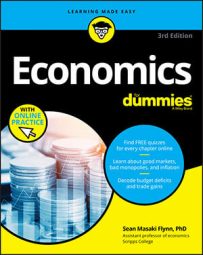- Money is a store of value. If you sell a cow today for one gold coin, you should be able to turn around and trade that gold coin back for a cow tomorrow or next week or next month. When money retains its value, you can hold it instead of holding cows, or real estate, or any other asset.
Inflations weaken the use of money as a store of value because each unit of currency is worth less and less as time passes.
- Money is a unit of account. When money is widely accepted in an economy, it often becomes the unit of account in which people write contracts. People start using phrases like “$50 worth of lumber” rather than “50 square feet of lumber,” or “$1 million worth of shirts in inventory” instead of “20,000 shirts in inventory.”
This practice makes sense if money holds its value over time, but in the presence of inflation, using money as a unit of account creates problems because the value of money declines. For instance, if the value of money is falling fast, how much lumber, exactly, is “$50 worth of lumber”?
- Money is a standard of deferred payment. If you want a cow, you probably wouldn’t borrow a cow with the promise to repay two cows next year. Instead, you’d be much more likely to borrow and repay in terms of money. That is, you’d borrow one gold coin and use it to buy a cow, after promising to pay back two gold coins next year.
The progressive devaluing of money during a period of inflation makes lenders reluctant to use money as a standard of deferred payment. Suppose a friend asks to borrow $100, promising to pay you $120 in a year. That seems like a good deal — after all, it’s a 20 percent interest rate. But if prices are rapidly rising and the value of money is falling, how much will you be able to buy with that $120 next year?
Inflations make people reluctant to lend money. Potential lenders fear that when the loans are repaid, the repayment cash won’t have the same purchasing power as the cash that was lent. This uncertainty can have a devastating effect on the development of new businesses, which rely heavily on loans to fund their operations.
- Money is a medium of exchange. Money is a medium (literally meaning “something in the middle”) of trade between buyers and sellers because it can be directly exchanged for anything else, making buying and selling much easier. In a barter economy, an orange farmer who wants to buy beer may have to first trade oranges for apples and then apples for beer because the guy selling the beer wants only apples. Money can eliminate this kind of hassle.
But if inflation is bad enough, money is no longer an effective medium of exchange. During hyperinflations, economies often revert to barter so buyers and sellers don’t have to worry about the falling value of money. For example, in a healthy economy, the orange seller can first sell oranges for cash and then trade the cash for beer. But during a hyperinflation, between the time he sells the oranges for cash and buys the beer, the price of beer may have skyrocketed so high that he can’t buy very much beer with the cash. During a hyperinflation, economies have to resort to cumbersome bartering.
Another effect of inflation is that it functions as a giant tax increase. This seems strange because you normally think of governments taxing by taking away chunks of people’s money, not by printing more money. But a tax is basically anything that transfers private property to the government. Debasing the currency or printing more money can have this effect.
Suppose that the government wants to buy a $20,000 van for the post office. The honest way to go about this is to use $20,000 of tax revenues to buy a van. But a sneakier way is to print $20,000 in new cash to buy the van. By printing and spending the new cash, the government has converted $20,000 of private property — the van — into public property. So printing new cash works just like a tax. Because printing new money ends up causing inflation, this type of taxation is often referred to as an inflation tax.Not only is the inflation tax sneaky, it unfairly targets the poor because they spend nearly all their incomes on goods and services, the prices of which go up greatly during an inflation. By contrast, because the rich have the opportunity to save a lot of their incomes, proportionately they’re less affected by an inflation tax. By investing their savings in assets whose prices go up during an inflation (such as real estate), the rich can insulate themselves from a great deal of the harm caused by inflation.
Check here to find out what causes inflation.

